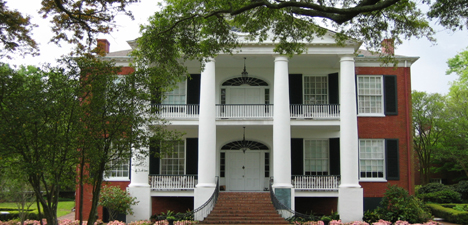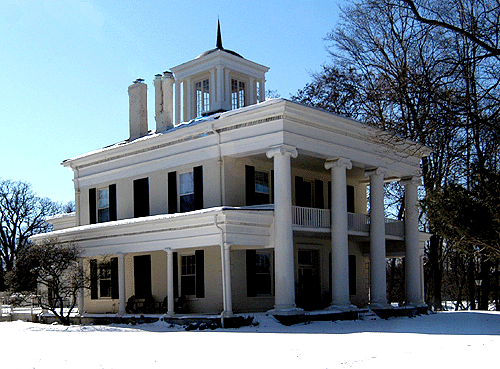Encyclopedia Dubuque
"Encyclopedia Dubuque is the online authority for all things Dubuque, written by the people who know the city best.”
Marshall Cohen—researcher and producer, CNN
Affiliated with the Local History Network of the State Historical Society of Iowa, and the Iowa Museum Association.
CLASSICAL REVIVAL ARCHITECTURE
CLASSICAL REVIVAL ARCHITECTURE. The Classical Revival or Neoclassical style is one of the most commonly seen across the country. Inspired by the 1893 World’s Columbian Exposition in Chicago, Classical Revival style buildings often have massive columns with classical Corinthian, Doric or Ionic capitals, topped by a front facing pediment. One of the most distinctive versions of this style features a full height columned front porch topped with a classical pediment.
Other variations of this style may feature a rounded front portico with columns and a balustraded flat roof, or a flat-roofed, full or partial front porch with columns. The arrangement of windows and doors is formal and symmetrical, with the front door often flanked by pilasters or side lights and capped with a flat entablature, broken pediment or rounded fanlight. The Classical Revival style is less ornate than the Beaux Arts style which was also popular in the 1885 to 1930 period and employs similar classical details.
Classical Revival style with its impressive Greek temple-like form was most often used for courthouses, banks, churches, schools and mansions. The prominent architectural firm of McKim, Meade and White designed many buildings in this style across the nation in the early years of the 20th century.
---
Source:
"Classical Revival Style 1895 - 1950" Online: http://www.portal.state.pa.us/portal/server.pt/community/late_19th___early_20th_century_revival_period/2390/classical_revival_style/294771



